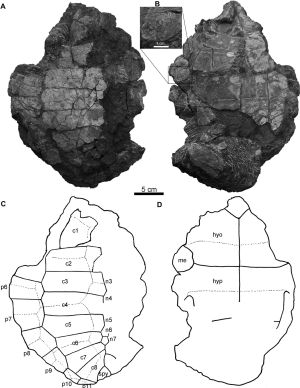 |
| The fossils of Polysternon isonae |
 |
| A reconstruction of the 65 million year old Polysternon isonae turtle |
Their hard shells and scaly skin mean that they are reasonably well represented in the fossil record from the Jurassic onwards, when the reptile family underwent a wave of diversification. Palaeontologists excavating near Barranc de Torrebilles in the district of Isona I Conca Dellà in the Spanish Pyrenees, in 2008 - 2009, discovered a new species. The extinct turtle genus Polysternon contains three species, which are very similar in shape. The problem with naming new species of turtle is that most fossils are fragments of shell.
This new specimen, while incomplete, showed detail of the ventral (underside) side of the shell which is very useful for indentifying different species of turtle. This creature, while superficially similar to other Polysternon species so different that it prompted the palaeontologists to make it a new species. Named Polysternon isonae, its shell was oval in shape being 50 centimetres long and 40 centimetres wide. So far it is the species closest to the Cretaceous extinction event, possibly making it the last of the Polysternon turtles on Earth.